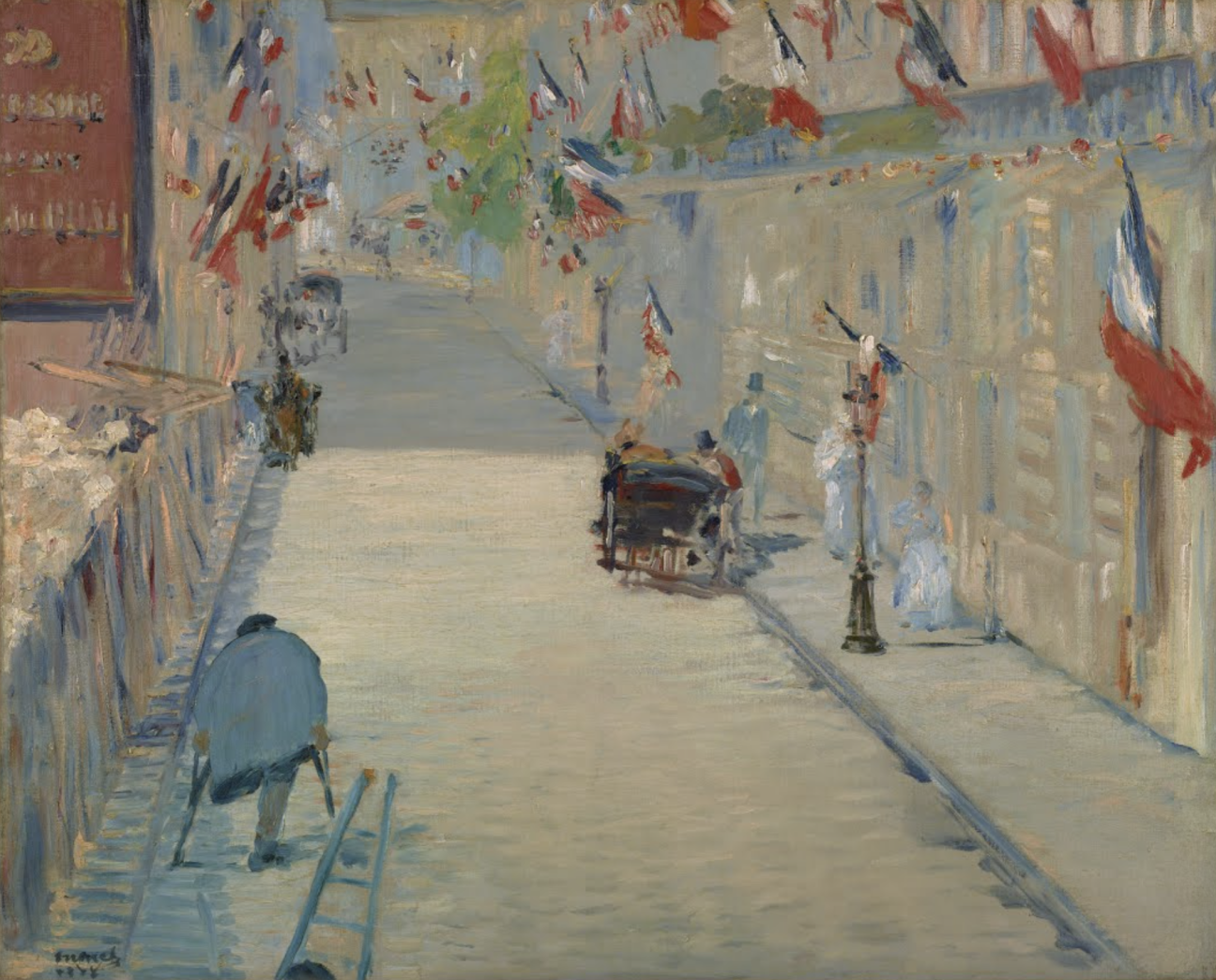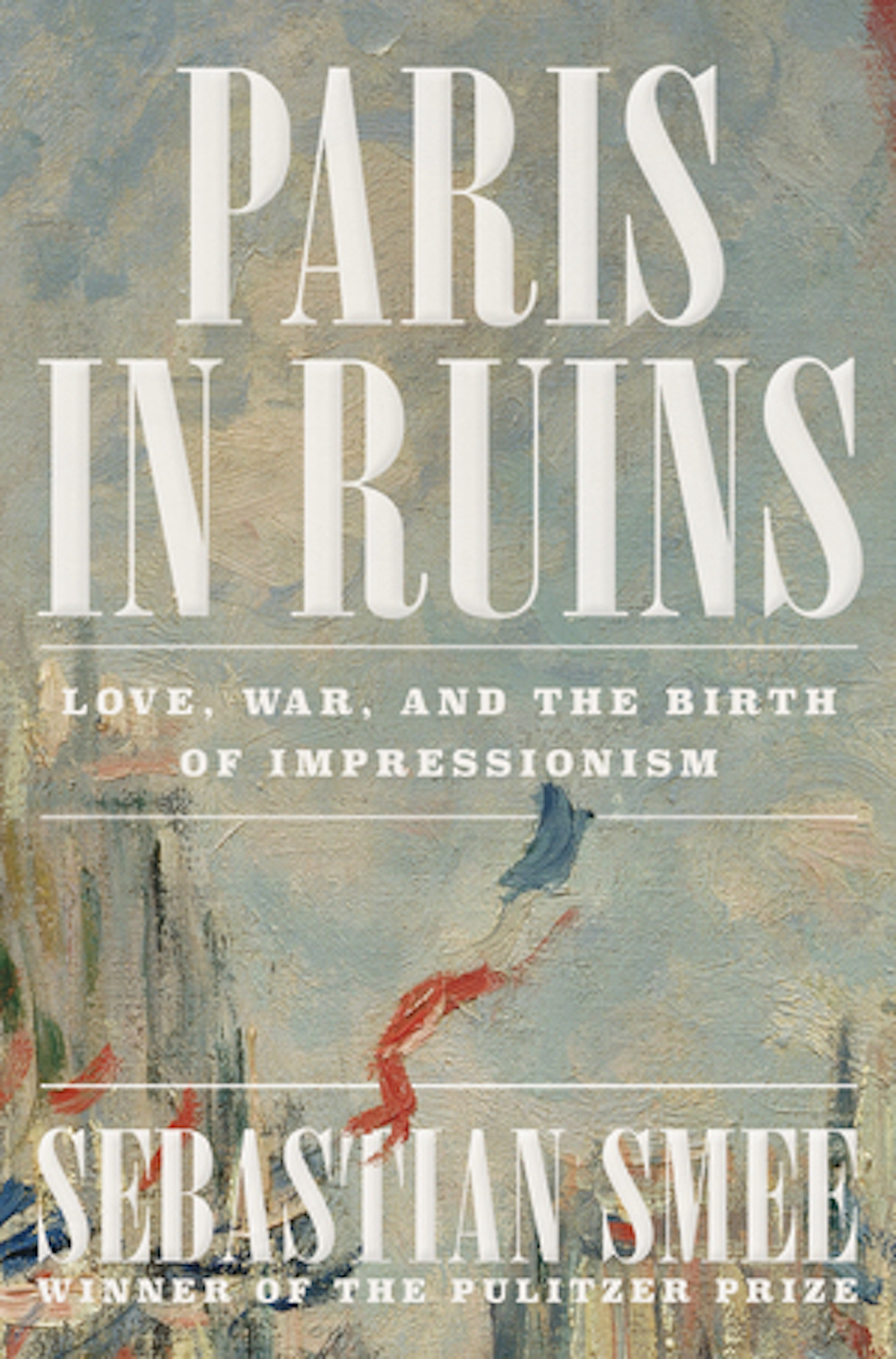
In the popular imagination, Impressionism is synonymous with tranquil pink sunsets, snowy street scenes, and sun-dappled lily ponds. But in his new history of the movement, which turns 150 this year, Pulitzer Prize-winning art critic Sebastian Smee zeroes in on the bloody backdrop that reshaped Paris in the era of the Impressionists and imbued their art with newfound feelings of fragility, transience, and, eventually, freedom.
Told with propulsive energy and rich historical detail, Paris in Ruins: Love, War, and the Birth of Impressionism, focuses on the love story between painters Berthe Morisot and Édouard Manet, as well as on Edgar Degas, all of whom were trapped in Paris during the deadly Prussian siege of 1870-71, also known as the "Terrible Year," while their counterparts Claude Monet, Paul Cezanne, and Camille Pissarro fled.
CULTURED sat down with Smee to talk about what drove the Impressionists to paint in the “continuous present tense,” the relationship between the war and the art that came after, and that time Manet challenged an art critic to a duel.

CULTURED: Why did you choose to center the book around these three artists—Manet, Morisot, and Degas—in particular? And why not, for example, Monet?
Sebastian Smee: I focus on those three (and particularly Manet and Morisot) because, of the Impressionist group, only these three lived through the siege of Paris in 1870-71. Monet and Pissarro were in London. Cézanne, Sisley, and Renoir were elsewhere in France. I felt that the extremity of what Manet and Morisot went through in that very difficult period marked out their experiences from their Impressionist peers.
CULTURED: You show how Impressionism emerged in part out of the bloodshed of Prussia's siege of Paris. In what ways did the experience of living through this period change these artists' work compared to those who escaped?
Smee: Aspects of the painting style that became Impressionism were underway before 1870-71. The movement had its roots in the plein-air painters working in Italy in the Revolutionary era, and then in Constable, Corot, Courbet, Boudin, and the other Barbizon painters, and of course Manet’s work of the 1860s. The first Impressionist paintings are usually dated to around 1867-68. But the first Impressionist show was not until 1874, and in the intervening years there was an extraordinary political, social, and military convulsion in the form of the siege of Paris and also the Commune, a left-wing insurrection that saw Paris briefly secede from the rest of France before being violently crushed, resulting in the destruction of large parts of central Paris.
I think all the Impressionist painters were affected by these events—even Monet and Pissarro in England. How could they not be? Everything that had seemed secure and certain was thrown into doubt. Studios were ransacked, art destroyed. Artist colleagues and friends (like Frederic Bazille) were killed in action. The Empire ended, a republic was declared, Paris was starved and bombarded, defeated, embroiled in civil war. I focus on how these events led to changes in the working methods of Morisot and Manet in particular. Having survived the trauma, Morisot (who was lucky to survive) made a decision to commit herself to pursuing a professional career as an artist. She also switched from landscapes to portraits and figures in domestic settings and painted in a looser style that seemed to embrace her newfound sense of transience and fragility. Manet turned from playful quotations of old masters and compositions intended for the Salon to paintings that were more focused on life in present-day Paris and more freely brushed, in the manner we associate with Impressionism. I think both were stunned and sobered by the events they lived through. Fired by a newfound sense of fragility, they were more inclined to dwell in the present and try to capture fugitive effects of light and social interactions.
CULTURED: Why do you think Impressionists chose not to portray the scenes of war and revolution around them, and instead focused on life's more subtle transitions, like the changing of seasons?
Smee: It’s very hard to say. You could argue that it was a straightforward case of psychological repression or denial. Or that they just wanted to move beyond the recent trauma and return to health and normality. We know that they were not interested in history painting—that they were instead trying to capture a sort of continuous present tense. Maybe this was just because history painting, which groaned with outdated moral rhetoric, was exhausted, clapped out, spent. That’s the usual explanation. But maybe painting the present tense was their way of sort of slapping their cheeks and waking from the nightmare of recent history?

CULTURED: You describe Impressionism as a patriotic movement. How so?
Smee: I note that this is one of the ways it could be characterized. “Patriotic” in the sense that the Impressionist artists were proud of France, and especially of its century-old revolutionary legacy: They all wanted to see France established as a democratic republic, after a century of upheaval and reversals. I don’t think their painting is blatantly patriotic—they were generally anti-propaganda. But after the humiliations of the Terrible Year, they did have a reparative impulse. They seemed to want to celebrate republican values and to show Paris and the French countryside as lovely locales of a democratic, civil society.
CULTURED: You share a hilarious story about Manet dueling one of his critics. What led up to that encounter and how did it end? Have any artists ever wanted to fight you over a review?
Smee: Oh, it’s a silly story, but very funny! Manet was offended by something the critic Edmond Duranty had written about him. In many ways, Duranty was a mouthpiece for Edgar Degas, so Manet’s complicated friendship and rivalry with Degas may have played into the fact that he took great offense. Manet challenged him to a duel, Duranty accepted, and what happened next seemed to suggest that both men shared an awareness of the absurdity of the situation—as if they were actors playing out tired parts with little conviction. This led to great comedy, and an amusing rapprochement at the end of the day.
I myself was once challenged to a duel—not by an artist but by a sort of social activist-cum-comedian. I regret that I didn’t accept!
CULTURED: You have a particular talent for telling vivid stories that come from looking at the relationships between artists—friendships, affairs and, in the case of your 2016 book The Art of Rivalry, competitors. What is it about looking at pairs, or in this case a trio, that allows you to see something you couldn't see by looking solely at the individual?
Smee: I think I’m just the sort of writer and critic who is interested in the human motivations for artmaking. That means I’m interested in relationships, and in things like influence (on the level of personality as much as art), competition, rivalry, distraction, ambition, love, and loneliness. This book has a wider purview than the individual chapters of The Art of Rivalry, but it is still basically focused on a pair: Manet and Morisot. Degas only comes into it obliquely. I felt that there was a strong connection between them and that what they both went through during the Terrible Year must have affected their motivations.
CULTURED: What do you think is most misunderstood about Impressionism today?
Smee: A lot about Impressionism is very clearly understood, thanks to generations of scholars and general audiences who can see the beauty in these pictures with their own eyes. But you could argue that it is too often treated as a monolithic phenomenon when in fact each of the artists associated with the movement was not only very different but constantly evolving. Even more than this, I think people forget that the Impressionists, following Manet, were all fervent republicans at a time when France’s status as a republic was, in the wake of the trauma of 1870-71, extremely precarious. That’s to say, it was a political movement—a style of artmaking that had clear political allegiances and implications.










 in your life?
in your life?

